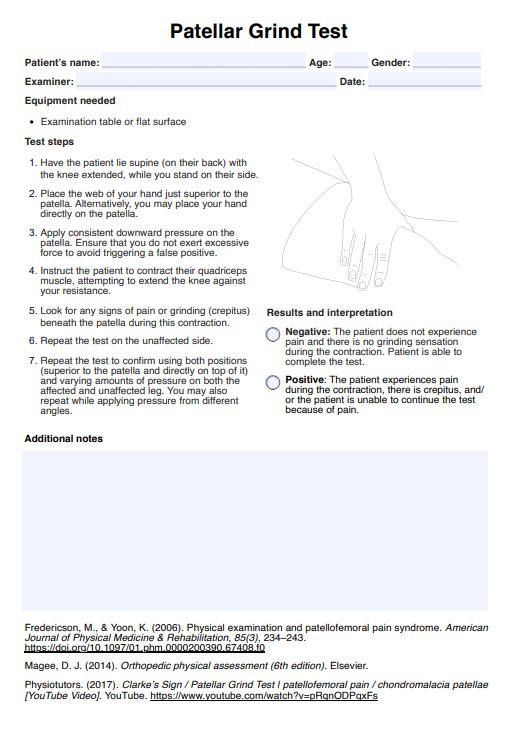Patellar grinding often results from conditions such as chondromalacia patellae, patellofemoral arthritis, or medial patellar instability, where cartilage wear or alignment issues cause friction and anterior knee pain during movement.

Patellar Grind Test
If patients complain about pain in their kneecaps, use the Patellar Grind Test and determine if they have a patellofemoral joint disorder.
Patellar Grind Test Template
Commonly asked questions
The Patellar Grind Test, also known as Clarke’s Test, is a knee examination assessing patellar pain and potential joint damage by applying pressure on the patella while the patient contracts their quadriceps muscles.
Additional assessments include the patellar tilt test for alignment issues, the patellar apprehension test for instability, and the patellar glide test to examine lateral patellar movement. These tests offer complementary insights into patellar health.
EHR and practice management software
Get started for free
*No credit card required
Free
$0/usd
Unlimited clients
Telehealth
1GB of storage
Client portal text
Automated billing and online payments











